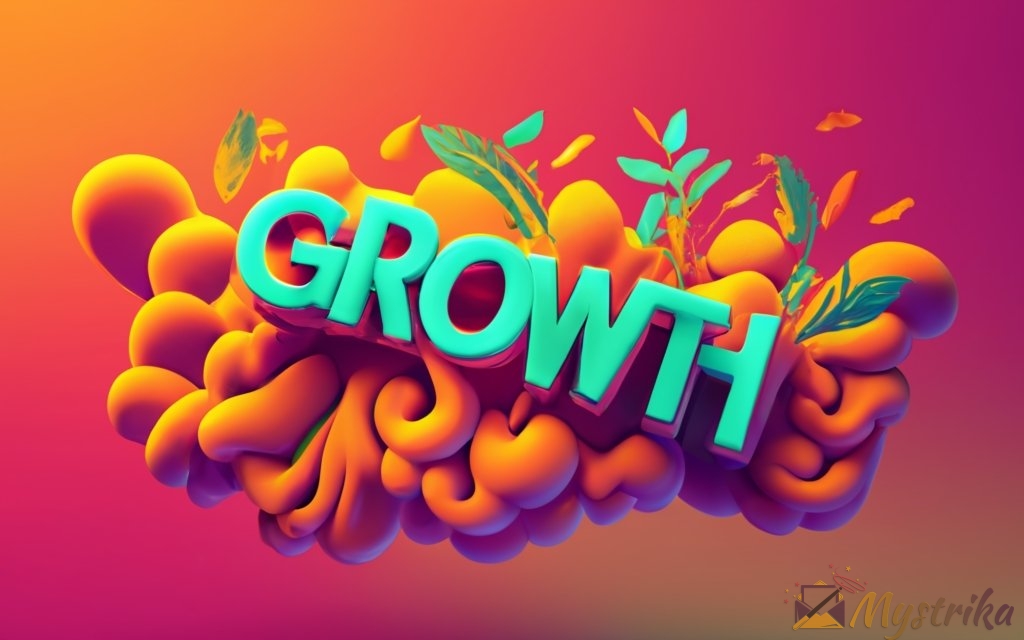Grabbing attention in an overloaded inbox is an art. Master it, and your open rates will soar.
Just one line – your email’s subject – makes the difference between ignition and ignored.
This complete guide reveals insider tips and proven formulas for irresistible subjects that compel action. Discover how to craft perfect touching base and follow up messages your recipients can’t resist.
Learn to stop blending into the background and start sparking high-priority opens. Let’s dive in!
What is a “Touching Base” Email?
A “touching base” email is a quick, casual message sent to maintain contact, provide an update, or check in with someone. Unlike more formal follow up emails that seek definitive responses, the goal of a touching base email is simply to strengthen relationships and keep communication open.
Definition and Purpose
Specifically, a touching base email aims to:
- Briefly reconnect and show you’re thinking of the recipient
- Provide a friendly status update
- Seek informal input or feedback
- Assess availability and interest in further discussion
It’s the email equivalent of sticking your head in someone’s office to say a quick hello. You’re not asking for an immediate reply or decision – just hoping to stay top of mind.
Touching base emails are useful for:
- Prospects: Periodically reaching out so they remember you, without being pushy about closing a sale.
- Existing Contacts: Maintaining open communication and looking for opportunities to add value.
- Previous Leads: Re-engaging old contacts who have gone cold to restart discussion.
- New Connections: Following up after an initial meeting to continue the relationship.
The casual tone and brevity of a touching base email makes it easy and natural to send. But it still demonstrates that you’re interested in the recipient and invested in an ongoing relationship.
Difference from Follow Up
So how does a touching base email differ from a follow up?
- Purpose: Follow up emails seek specific responses, while touching base is just about maintaining communication.
- Timing: Follow ups have more urgency and are sent shortly after meetings/requests. Touching base can happen at any time.
- Length: Follow ups tend to be longer and more formal. Touching base is brief and conversational.
- Response: You expect direct replies and next steps from follow ups. But touching base doesn’t require an immediate response.
Think of follow up emails as task-oriented, and touching base emails as relationship-oriented.
When to Send a Touching Base Email
Since touching base emails are informal and don’t ask for instant replies, they can be sent at any time without seeming intrusive.
Some good opportunities include:
- After Conferences/Events: “It was great chatting at [event]! Let me know if you’d like to continue the conversation.”
- Recurring Check-ins: “Checking in to say hi and see how your quarter is going so far.”
- Before Major Holidays: “Wanted to wish you a Happy Holidays before time gets away from us.”
- When You Have a Small Update: “Thought you’d like to know we just expanded to the West Coast.”
- To Restart Stale Discussions: “Haven’t heard from you in awhile – are you still considering [proposal]?”
Meanwhile, follow up promptly when:
- Meeting Notes/Documents Were Promised: “Wanted to check if you still need those meeting notes I promised to send over.”
- A Question Needs Answering: “Circling back on the compliance question we discussed on Tuesday’s call.
- A Decision Is Pending: “Following up on the contract we sent last week – let me know if you need any other info from our end.”
- Next Steps Were Discussed: “Per our discussion, I’ll proceed with [next step] – sound right?”
Picking the right time and purpose for touching base vs. following up ensures your emails always maintain an appropriate, productive tone.
Wrapping Up
A thoughtful, well-timed touching base email can do wonders for strengthening relationships and keeping the communication flowing. Start putting these tips into practice, and you’ll notice more regular engagement and responsiveness from your contacts.

Examples of Great Touching Base Email Subject Lines
The subject line is the first impression your touching base email makes. To get opened and read, it needs to clearly convey the message while enticing the recipient.
Let’s look at some proven formulas, templates, and examples you can model.
Subject Line Formulas
Rather than starting from scratch each time, use these frameworks as starting points:
- [Recipient’s Name] + Checking In e.g. “Hey John, Just Checking In”
- Quick Question About + [Topic] e.g. “Quick Question About Those Design Mockups”
- Hope You’re Well + [Value] e.g. “Hope You’re Well! Here’s an Update on Our Latest Work”
- It’s Been Too Long + [Purpose] e.g. “It’s Been Too Long – When Can We Catch Up?”
Personalized Subject Lines
Personalizing the subject line boosts open rates by adding familiarity. You can personalize with:
- Recipient’s First Name: “Hey Amy, Haven’t Heard from You in Awhile!”
- Company/Industry: “Checking In on the State of the Pharma Industry”
- Location: “Hope Boston Treated You Well Last Week!”
- Recent Interactions: “Thanks for the Advice on our Social Strategy!”
- Upcoming Events: “Excited for Next Week’s Conference in Austin!”
| Formula | Example |
| [First Name] + [Occasion] | “Hope you have a great birthday, Tina!” |
| Haven’t Heard from You in + [Timeframe] | “Haven’t Heard From You in Months, Everything Okay?” |
| [Company] + [Industry News] | “Saw Apple’s Big Product Launch – How’s It Impacting Electronics?” |
Subject Lines that Create Curiosity
Piquing curiosity gives recipients incentive to open the email. Try:
- Asking an interesting question: “Quick – Marvel or DC?”
- Making a fascinating statement: “You Won’t Believe What Our Data Scientists Found”
- Being mysteriously vague: “I Have a Secret to Share…”
- Using humor: “Let’s Grab Coffee and Discuss the Latest Gossip”
- Bringing up controversy: “Have You Heard About the Changes to the Program?”
| Formula | Example |
| You’ll Never Guess + [Topic] | “You’ll Never Guess Who Called for You Yesterday!” |
| I Have to Tell You About + [News] | “I Have to Tell You About Our New Office Expansion!” |
| What Do You Think of + [Topic]? | “What Do You Think of the New iPhone Models?” |
Subject Lines that Highlight Value
Communicate the value you bring by mentioning:
- Helpful Information: “Sharing Our 2023 Industry Forecast Report”
- Exclusive Deals: “We Have Inventory of the Sold Out Product You Wanted”
- Complimentary Services: “Thought You’d Benefit from a Free Consultation”
- Relationship Perks: “VIP Pricing Just for My Top Contacts”
- solutions to their problems: “Tips to Reduce Production Costs by 20%”
| Formula | Example |
| Thought This Would Interest You: [Topic] | “Thought This Would Interest You: Guide to Reducing Churn” |
| Good News – We Have [Valuable Item] | “Good News – We Have those Sold Out Concert Tickets Back in Stock!” |
| A [Gift] For My [VIP Customers] | “A Gift Basket For My Favorite Customers” |
Subject Lines that Drive Next Steps
Give recipients a clear call to action:
- Follow Up: “Let’s Continue Our Chat from Last Week”
- Make a Decision: “Any Updates on If You’ll Move Forward?”
- Provide Feedback: “Would Love Your Thoughts on the Rebrand Concepts”
- Have a Discussion: “When Works to Brainstorm Ideas?”
- Meet Up: “I’ll be in Town Next Week – Drinks to Catch Up?”
| Formula | Example |
| Let’s + [Action] to [Purpose] | “Let’s Hop on a Call to Discuss Those New Leads” |
| Can We + [Action] About [Topic]? | “Can We Talk About the New Pricing Structure?” |
| Looking Forward to + [Action] | “Looking Forward to Catching Up Over Coffee!” |
Putting it All Together
With the right blend of personalization, intrigue, value, and a clear call to action, your subject lines will compel recipients to open your emails.
Try drafting a few options using the templates and formulas above. A/B test them on a small list to see which resonate best before sending your touching base outreach wide.

How to Write the Perfect Touching Base Email Subject Line
Crafting a great touching base email subject line is an art and a science. Apply these proven tips to grab attention and get your emails opened.
Keep it Short and Descriptive
Stick to 50 characters or less to ensure the entire subject line shows up in the preview pane.
Use clear, benefit-driven language to communicate the value. For example:
✅ “Quick Feedback on the Design Mockups?”
❌ “Checking in on Project Updates”
Prioritize key details and avoid vague phrases that sound like spam. For example:
✅ “Following Up on the Q3 Budget Presentation”
❌ “Hope you’re doing well!”
Use Action Verbs and Commands
Sprinkling in action verbs adds urgency and energy. For example:
- Discuss
- Brainstorm
- Follow up
- Continue
- Schedule
- Plan
Or open with direct commands like:
- Check this out…
- See inside for…
- Read this now…
- Don’t miss…
Ask Engaging Questions
Posing an intriguing question encourages recipients to open the email seeking answers. For example:
- What do you think of our rebrand?
- Have you seen this crazy announcement?
- Quick poll: Marvel or DC?
- Got a minute to chat about [topic]?
- Have a favorite marketing hack you’d recommend?
Ensure it’s a question relevant to the recipient and not just clickbait.
Include Specific Numbers or Stats
Subtly emphasizing numbers and stats taps into our instinctual curiosity. For example:
- Our website traffic increased 30% last month…here’s how
- I have 3 ideas to improve our process
- Check out the top 10 tools recommended by our experts
But use numbers sparingly – 1 to 2 per subject line at most.
Always Test Different Options
There’s no one “perfect” touching base subject line for everyone.
Test out options to see what resonates best with your subscribers. For example, send 50% each of:
- “Haven’t Heard from You in Awhile!”
- “Let’s Continue Our Discussion on [Topic]”
See which nets higher open rates, then optimize based on the results.
Mistakes to Avoid When Writing Subject Lines
It’s just as important to know what not to do. Steer clear of these common pitfalls.
Using Vague, Generic Language
Avoid overly broad phrases that could apply to anyone like:
- Just saying hello!
- Checking in
- Can we connect?
They give the recipient no context or reason to care. Instead, be specific about the purpose.
Forgetting Personalization
Even minimal personalization helps. Use the recipient’s:
- First name
- Company name
- Location
- Previous conversation topic
Tools like mail merge help personalize at scale.
Making it Too Salesy or Spammy
Don’t oversell with aggressive language (“Buy now!”), spam trigger words (“Free gift!”) or too many exclamation points (!!!!).
Your subject line should intrigue, not turn readers off. Prioritize value over sales.
Putting it All Together
Follow these best practices to craft irresistible touching base email subject lines:
- Be concise and descriptive – Cut vague phrases and highlight benefits
- Use commands and questions – Draw readers in and direct their attention
- Include specifics – Leverage stats, numbers, and details
- Personalize – Add custom context with names, topics, etc
- Test options – Experiment to learn what works for your audience
- Avoid common mistakes – Steer clear of overly salesy or spammy language
With compelling, benefit-driven subject lines, your touching base emails will see open rates skyrocket in no time.

Crafting an Effective Follow Up Email Subject Line
While touching base is about maintaining an open connection, follow up emails drive towards definitive next steps and responses. Craft your subject line carefully to get the right follow-up action.
Similarities and Differences from Touching Base
Effective follow up and touching base subject lines share some core best practices, like:
- Being benefit-focused
- Using personalization
- Posing intriguing questions
- Keeping it short
However, follow up subject lines also:
- Add more urgency – Follow ups need responses ASAP, so the tone is more pressing.
- Refer to prior interactions – Directly mention past meetings, calls, or requests.
- Drive specific actions – Ask for direct responses rather than just open-ended discussion.
- Feel more formal – Follow ups tend to use fuller sentences and names vs casual phrases.
Following Up on Specific Asks or Meetings
The key to an effective follow up is tying it directly to previous interactions and needs. For example:
- “Sending Those Meeting Notes from Tuesday”
- “Circling Back on Next Steps from Our Call”
- “Checking if You Had Any Other Questions on the Proposal”
This reminds recipients exactly why you’re following up and what needs to happen next.
Other ways to reference past interactions include:
- “Re: [Email Subject]” – Follows up on a prior email thread
- “Per Our Meeting on [Date]” – References a recent meeting
- “As Discussed Last Week…” – Jogs their memory of a conversation
Driving Urgency with Deadlines
Prodding recipients to respond quickly can be done tactfully by mentioning deadlines. For example:
- “Needing Approval By Tomorrow for the Event”
- “Hoping to Finalize Content By EOD Friday”
- “Please Advise ASAP If You Can Make the Meeting”
But take care not to make unrealistic ultimatums. Keep deadlines reasonable.
Testing Response Rates of Different Subject Lines
Follow up emails often garner lower open rates because they feel like “work”.
Test subject line variations to learn what gets people to follow through. For example:
- “Deadline for Event Approval” (9% open rate)
- “Can You Confirm You’ll Make the Event?” (14% open rate)
The more conversational subject saw higher engagement. Apply those learnings to future follow up subject lines.
Follow Up Email Subject Line Templates and Examples
Apply these templates and examples for your next productive follow-up:
Meeting Follow Ups
| Template | Example |
| Following Up on [Meeting Topic] | “Following Up on Our Website Redesign Meeting” |
| Per Our [Meeting], Sending [Materials Discussed] | “Per Our Kickoff, Sending Meeting Notes and Next Steps” |
| About [Meeting]: [Question or Request] | “About Tuesday’s Catch-Up: Are You Free to Hop on a Quick Call?” |
Checking In on Requests
| Template | Example |
| Checking In on the [Request] | “Checking In on the New Article Request” |
| On the [Request] We Discussed | On the Customer Testimonial Request We Discussed |
| Please Advise: [Clear Next Step Question] | “Please Advise: Which Date Works Best For the Photoshoot?” |
Reminders About Upcoming Deadlines
| Template | Example |
| [Deadline] Fast Approaching | “Launch Deadline Fast Approaching” |
| Friendly Reminder: [Impending Deadline] | “Friendly Reminder: Proposal Due in 2 Days” |
| Don’t Forget: [Deadline Details | “Don’t Forget: Client Feedback Needed By Friday” |
Reconnecting with Old Contacts
| Template | Example |
| Haven’t Heard from You in [Time] | “Haven’t Heard From You in Months!” |
| [Name], Long Time! | “John, Long Time! Hope You’ve Been Well” |
| Catching Up with an Old Contact | “Catching Up with an Old Friend From College” |
The Follow Up Process
An effective subject line is just the first step. When following up:
- Refer to past interactions – Give context by mentioning previous calls, meetings, emails etc.
- Recap any open questions – Quickly reiterate any outstanding items that need response.
- Highlight impending deadlines – State the deadline and why prompt action is essential.
- Close with a clear CTA – End with concise next steps and contact info if they need help.
With a compelling subject line and structured follow up, you’ll get the responses you need to keep projects moving forward.

Best Practices for Writing Any Email Subject Line
Whether you’re touching base, following up, or sending a regular newsletter, these universal best practices will optimize your subject lines.
Keep it Short and Scannable
Today’s inboxes are overwhelmed. Ensure recipients can:
- Preview the full subject line – Stick to under 50 characters so the entire thing is visible.
- Quickly grasp the key details – Highlight the most important info upfront using clear, scannable language.
- Know what action to take – Use concise calls to action like Open, Read, Reply, Buy Now.
Trim any verbose filler words so only absolutely essential information comes through.
Match the Subject to Email Content
Nothing is more off-putting than a misleading subject line. Avoid this by:
- Accurately summarizing the core message – Readers will feel duped if you over-hype or under-sell the actual content.
- Using relevant language from the email body – Echoing key terms helps connect the dots for readers.
- Specifying the purpose upfront – e.g. “Recapping Our Meeting” vs something vague like “Updates”.
In essence, your subject line should be an accurate “preview” into the email.
Maintain Consistency Across Campaigns
Leverage the following elements to reinforce brand familiarity:
- Structured subject line formulas – e.g. “X Ways to [Your Benefit]”
- Brand terminology and keywords – e.g. “The [Your Brand] Guide to _“
- Uniform tone and style – Whether funny, formal, or conversational
- Recurring segments – e.g. “Tip of the Week”, “Product Spotlight”
With consistent and predictable email subjects, readers know it’s you.
Avoid Overused Phrases That Sound Like Spam
Stay clear of tropes that feel salesy, spammy or overdone like:
- Act Now!
- Free Gift!
- 50% Off!
- Earn Cash!
- Limited Time Only!
These will be instinctively tuned out or risk landing in spam folders. Prioritize value over hype.
Continually Test and Optimize New Subjects
Just like any marketing content, email subjects require constant refinement.
Leverage A/B testing to experiment with:
- Different phrases, styles, and approaches
- Varying subject line length
- Adding/removing emojis or brackets
- Personalized vs. generic subjects
Then double down on what resonates best with your audience.
Key Metrics for Measuring Subject Line Performance
Use data, not guesswork, to optimize. Track these essential metrics:
Open and Click-Through Rates
- Open rate – Percentage of recipients who opened the email
- Click-through rate – Percentage who clicked links within the email
This reveals if your subject compelled engagement. Benchmark vs. past performance.
Conversion and Revenue Metrics
- Conversions – How many desired actions were taken (purchases, sign-ups, etc)
- Revenue – Actual sales or leads generated
This connects email performance to bottom line business growth.
Unsubscribe and Complaint Rates
- Unsubscribe rate – Percentage who opted out after an email
- Complaint rate – Percentage who reported your email as spam
A spike may indicate a misleading or irritating subject. Troubleshoot causes.
Continual Optimization is Key
Like anything in marketing, the learning never stops when it comes to email subjects. Apply these universal best practices diligently, and your open rates will continue to rise.

Conclusion and Key Takeaways
Let’s recap what we’ve covered about crafting irresistible email subject lines that drive opens, engagement, and results.
The Importance of Email Subject Lines
Your subject line is often the make-or-break factor determining whether an email gets attention or ignored. Remember:
- Subjects lines appear prominently in email previews
- Recipients decide whether to open based on the subject
- Catchy, benefit-driven subjects boost open rates
- Personalized and urgent subjects improve click-throughs
- Consistent branding builds familiarity and trust
With well-optimized subjects, your messages will get read, responded to, and acted upon.
Best Practices for Touching Base and Follow-Up Emails
Both touching base and follow-up emails require:
- Clear, concise language summarizing the purpose
- A benefit-driven perspective focused on the recipient
- Personalization and relevance to the contact
Additionally, effective touching base subjects should:
- Maintain an informal, conversational tone
- Create curiosity about what’s inside the email
- Add value by highlighting useful info or offers
Whereas successful follow-up subjects should:
- Refer directly to previous interactions and next steps
- Convey urgency using dates, deadlines, and commands
- Drive specific calls-to-action vs just open-ended discussion
Apply the tailored best practices outlined above for noticeably higher open rates.
Continual Optimization
Like all aspects of marketing, improving email performance is an ongoing process. Remember to continually:
- Experiment with new subject line formats, styles and messaging
- Use A/B testing to identify what resonates with your audience
- Analyze open rates, click throughs, conversions and other key metrics
- Monitor unsubscribe and complaints to avoid irritating subjects
- Adjust your strategy based on learnings and results
With regular testing and optimization, your subject line skills will keep getting sharper.
Summary
- Touching base emails aim to maintain open communication while follow-ups drive towards definitive next steps. Use the right approach for your goals.
- Good subject lines are concise (under 50 chars), scannable, and highlight the main benefit or purpose upfront.
- Personalization (names, topics, etc) boosts open rates by adding familiarity and relevance.
- Use curiosity triggers like questions, humor, intrigue, or controversy to capture attention.
- Highlight value by mentioning useful info, exclusive deals, or solutions to their problems.
- Drive action with commands, calls to action, and specific next steps you want the recipient to take.
- Consistent structure, branding, segments and tone reinforce your professionalism.
- Avoid spammy phrases, hyperbole, or overused tropes that will cause emails to be ignored.
- Continually test new subject line length, style, content, emojis, and personalization.
- Track open rate, click throughs, revenue, unsubscribes and other KPIs to optimize what works.
- Keep refining your subject lines as part of an ongoing optimization process.
Frequently Asked Questions
How long should an email subject line be?
Aim for 50 characters or less. This ensures your entire subject line will be visible on most devices. Anything longer may get cut off or seem too wordy.
What makes a good email subject line?
A good subject clearly conveys the topic, grabs attention with relevance and personalization, and highlights the main benefit or action in 1-2 short phrases.
How can I make my subject line stand out?
Use curiosity triggers like humor, questions, intrigue, or urgency. Include specifics like stats, numbers, deadlines. Use commands and calls to action.
Should email subject lines be personalized?
Yes, personalization boosts open rates by 22% according to studies. Include first names, company names, locations, conversation topics etc.
What are some examples of touching base email subjects?
“Haven’t Heard From You In Awhile!” ” Checking In To Say Hi” “Thought You’d Like This Update” “Let’s Continue Our Discussion on [Topic]”
What are some examples of follow up email subjects?
“Circling Back on Next Steps” “Friendly Reminder: [Deadline]” “Following Up Per Our Meeting” “Please Advise on [Request]”
How often should I test new email subject lines?
Continually test new subject lines, at least with each new email campaign. Try different styles, messaging, lengths, personalization.
What metrics should I use to optimize email subjects?
Track open rates, click-through rates, revenue, conversions, unsubscribe rates. Test subjects that improve these KPIs.
How can I avoid my emails being marked as spam?
Avoid ALL CAPS, spam trigger words, exaggerated claims, and overusing salesy language. Ensure your subject matches the content.

